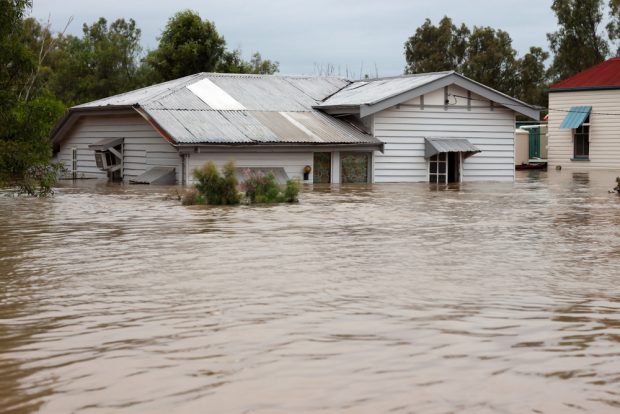 Image: Shutterstock.
Image: Shutterstock.
Last year, changes were made to the National Flood Insurance Program. The effective date was Oct. 1, and the changes offered several new provisions. The most significant provision allows consumers to choose their own flood insurance provider. In addition, they may cancel NFIP coverage mid-year if specific conditions are met. If the cancellation is approved, the consumer will receive a partial refund for that particular year.
The purpose of these changes as stated by the NFIP is to provide affordable insurance options for property owners to reduce the impact of flooding to structures in regard to both the private and public structures. Last year's flooding in the Carolinas, Louisiana, Michigan and Texas have made it clearer than ever how damaging and costly floods can truly be. Many Spanish-speaking regions were affected as well.
Recommended For You
Many credit unions have rallied together to provide flood relief to their members in the affected areas. But changes to the NFIP have been implemented to alleviate future financial burdens in Special Flood Hazard Areas by making it easier to purchase required flood insurance.
NFIP Changes and Benefits to Consumers
The move was birthed out of the need to keep the NFIP solvent. Until now, flood insurance options were limited and the NFIP had a lion's share of the market (85% nationwide). Therefore, seeking other coverage was difficult. Consumers were frustrated. So, how do the changes help?
The new measure specifically addresses duplicate coverage. This means customers who purchase new flood insurance for an insured property currently covered by an NFIP policy can request a refund of the unused portion of their NFIP policy premium. In addition, if six months remain on the policy term for the NFIP policy, the consumer can receive as much as 50% of the prepaid premium refunded to them.
A Compliance Reminder
That said, it's important to look at how this particular change will affect credit unions and compliance. Remember, flood insurance must be purchased before you close out the loan, and the decision comes down to risk assessment in regard to the Flood Act. Credit unions are required to have the borrower purchase flood insurance that will cover either the principal balance of the loan, or the maximum coverage limit for that particular property. This applies to any individual seeking to obtain a loan for a personal property, mobile home or building in a designated SFHA. Your credit union's home equity forms should include it.
In fact, this is what regulators will really be looking for. Before a credit union commits to extending credit or renewing a loan secured by a personal property, mobile home or building, it must perform a flood hazard determination. The fee for determination is required to be disclosed as a finance charge in order to maintain compliance with TILA regulations. Of course, if any of the above-mentioned properties are covered by flood insurance for the entire life of the loan, flood hazard determination is not necessary.
This can make compliance confusing, which is why it's important to choose a forms provider that is familiar with the specifics of flood insurance, and how it relates to open- and/or closed-end lending I English or Spanish. Remember, flood insurance is tied to the specific property, not the loan itself. Yet, disclosure requirements for determination are tied to the loan in order to maintain TILA compliance.
NFIP: The Conversation Extends into 2019
It's expected that changes to the NFIP will continue this year in an effort to keep the NFIP solvent. This move echoes the Biggert-Waters Flood Insurance Reform Act (BWA) that Congress passed in 2012.
That act was a direct response to large deficits incurred by the NFIP associated with claim payouts from major floods. The BWA was an effort to keep the NFIP solvent through 2017. The 2018 change for duplicate coverage is an effort to do the same.
However, compliance requirements for credit unions still remain clear. It is important to make sure any flood insurance required by a collateral property is obtained before closing the loan. Duplicate coverage could present a compliance challenge if new flood insurance is obtained. Fine print and other wording will change if terms and coverage are different. Making them available in Spanish benefits your Spanish-speaking members and potential members.
Don't Drown in Compliance
In that instance, forms must be updated to match the new information. Again, it is critical to have a forms provider familiar with the industry and nuances of flood insurance. Congress has been modifying NFIP regulations and requirements since 1994.
A good forms provider will know how each change affects your forms looking forward and backward. In other words, if a final ruling for NFIP stacks onto previous regulations, your forms provider should know how that information will affect your CEHE and OEHE lending forms. In addition, they should be able to provide you with any necessary changes in regard to TILA so those disclosures can be updated as well. The ultimate goal is to keep the consumer informed while maintaining compliance for your credit union.
Remember, NFIP provisions could change again. The latest provision is relatively new, all things considered. When dealing with flood insurance, staying informed and ahead is the best way to remain on higher ground. Otherwise, you might find your credit union underwater, should a compliance examiner walk through your door.
 Richard Gallagher
Richard Gallagher Richard Gallagher is CEO of Oak Tree Business Systems, Inc. He can be reached at 800-537-9598 or [email protected].
© 2025 ALM Global, LLC, All Rights Reserved. Request academic re-use from www.copyright.com. All other uses, submit a request to [email protected]. For more information visit Asset & Logo Licensing.






